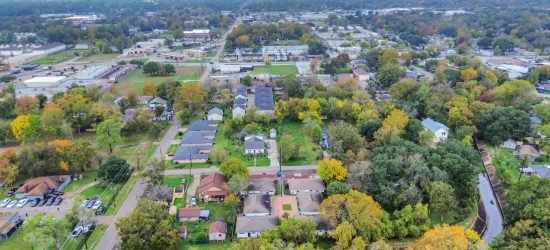Repossession is a legal process where a lender takes back property from a borrower who has defaulted on their mortgage payments. Understanding the repossession process is crucial for both homeowners facing the loss of their property and investors interested in purchasing repossessed homes. This comprehensive guide explores the intricacies of repossessing a residence, including the legal framework, the process, and the implications for all parties involved.
Understanding Repossession
Understanding repossession can help homeowners navigate the complexities of the process and potential buyers recognize opportunities in the real estate market.

What Is Repossession?
Repossessing a residence occurs when a borrower fails to keep up with mortgage repayments, leading the lender to take back the property to recover the owed debt. The process of repossessing a residence can be stressful and complicated, affecting the homeowner’s credit score and future financial opportunities. However, repossessing a residence also opens opportunities for buyers looking to purchase properties at potentially lower prices.
Legal Framework

Repossession laws vary by country and state, but they generally follow a similar structure designed to protect both the lender’s rights and the borrower’s interests. Understanding this framework is crucial for anyone facing repossessing a residence or involved in the real estate market. Here’s a detailed look at the typical steps involved in the repossession process:
- Default Notice: The process begins when the borrower misses several mortgage payments. The lender issues a default notice, informing the borrower of the missed payments and the risk of repossession.
- Notice of Intent: If the borrower does not rectify the default, the lender issues a notice of intent to repossess, giving the borrower a final chance to settle the debt.
- Court Proceedings: If the debt remains unpaid, the lender may initiate court proceedings to obtain a repossession order.
- Repossession Order: Upon granting the order, the lender can take back the property, often with the assistance of court bailiffs.
The Repossession Process
The repossession process involves several stages, each crucial for both borrowers and lenders to understand.

Step-by-Step Guide
Navigating the process of repossessing a residence can be daunting, but understanding each step can help borrowers and lenders manage the situation more effectively. Here’s a detailed, step-by-step guide to the repossession process:
- Missed Payments: The repossession process starts with missed mortgage payments. Lenders typically allow a grace period before taking action, but prolonged defaults trigger the process.
- Communication: Lenders usually attempt to communicate with the borrower to resolve the issue. Options like repayment plans or mortgage modifications may be discussed.
- Default Notice: If communication fails, the lender issues a default notice, warning the borrower of potential repossession.
- Notice of Intent: Should the borrower not act, the lender issues a notice of intent to repossess, typically giving a final deadline.
- Court Action: If the debt remains unresolved, the lender files for a repossession order in court. The borrower receives a court summons.
- Court Hearing: Both parties present their case. If the court rules in favor of the lender, a repossession order is issued.
- Repossession: The property is repossessed, often with the help of court-appointed bailiffs.
- Auction or Sale: The lender sells the property, usually at auction, to recover the owed debt.
Avoiding Repossession
Facing the prospect of repossessing a residence can be an incredibly stressful experience for homeowners. However, there are several proactive measures that can be taken to avoid losing their property. Here’s a comprehensive guide on the steps homeowners can take to mitigate the risk of repossessing a residence:
- Communication: Engage in open communication with the lender to explore possible solutions.
- Financial Counseling: Seek advice from financial counselors who can help negotiate with lenders.
- Repayment Plans: Agree to a structured repayment plan to clear overdue payments gradually.
- Refinancing: Consider refinancing the mortgage to more manageable terms.
- Selling the Property: Selling the property voluntarily can help repay the mortgage and avoid the negative impact of repossession.
Implications of Repossession

Repossessing a residence carries significant consequences for both homeowners and potential buyers. Understanding these implications can help in making informed decisions and preparing for potential challenges.
For Homeowners
For homeowners, understanding the wide-ranging implications of repossession is crucial for preparing and mitigating its adverse effects.
- Credit Score:
- Severe Impact: Repossession can drastically lower a homeowner’s credit score, typically by 100 to 150 points. This negative mark can remain on their credit report for up to seven years, making it difficult to secure loans, credit cards, or even rental agreements in the future.
- Rebuilding Credit: Post-repossession, homeowners will need to engage in consistent and diligent efforts to rebuild their credit, which can include paying bills on time, reducing debt, and using secured credit cards.
- Financial Strain:
- Loss of Property: Losing a home means losing a significant financial asset. Homeowners may also be liable for any remaining mortgage debt not covered by the sale of the repossessed property.
- Legal and Administrative Costs: The process of repossession involves various costs, including legal fees, court costs, and potential moving expenses, adding further to the financial burden.
- Homelessness Risk: In severe cases, repossession can lead to homelessness, especially if alternative housing arrangements are not immediately available.
- Emotional Impact:
- Mental Health: The stress and anxiety associated with the threat of losing one’s home can lead to significant emotional and psychological distress. Issues such as depression, anxiety, and even physical health problems can arise.
- Family and Social Stress: The emotional toll extends to the homeowner’s family, causing strain in relationships and potentially leading to social isolation.
- Social Stigma:
- Reputational Damage: There is often a social stigma attached to repossession, which can affect personal and professional relationships. The perception of financial instability can lead to embarrassment and reduced self-esteem.
For Buyers
For buyers, repossessed properties present a mix of opportunities and challenges that require careful consideration.
- Lower Prices:
- Cost Savings: Repossessed properties are often sold at a discount, sometimes below market value, making them attractive for budget-conscious buyers or investors looking for a bargain.
- Negotiation Leverage: Buyers may have more room to negotiate prices and terms, especially if the lender is eager to offload the property quickly.
- Investment Potential:
- Profit Margins: Purchasing a repossessed home can be a profitable venture if the buyer is willing to invest in renovations and repairs. Reselling or renting out the property can yield significant returns.
- Market Opportunities: In areas with high demand for housing, a well-renovated repossessed property can quickly appreciate in value, offering substantial long-term investment potential.
- Risks:
- Property Condition: Repossessed homes are often sold “as-is,” meaning they may require extensive repairs. Issues such as structural damage, outdated systems, and neglected maintenance are common.
- Legal Issues: There can be legal complications, including unclear property titles, unpaid taxes, and liens. Buyers should conduct thorough due diligence and consider hiring a real estate attorney to navigate these challenges.
- Market Factors: Economic downturns or neighborhood declines can affect the resale value and profitability of the investment. Buyers must assess market conditions and future growth potential carefully.
- Financing Challenges: Securing financing for a repossessed property can be more difficult, as some lenders are hesitant to provide loans for homes that may need significant repairs.
- Emotional and Practical Considerations:
- Due Diligence: The process of purchasing a repossessed property can be time-consuming and complex, requiring detailed inspections, legal checks, and financial assessments.
- Living Conditions: If the buyer intends to live in the repossessed property, they must be prepared for potential living condition issues during initial repairs and renovations.
Investing in Repossessed Properties
Investing in repossessed properties can be a strategic way to enter the real estate market or expand an investment portfolio.

Finding Repossessed Properties
Potential buyers can find properties repossessing a residence through various channels:
- Auctions: Many repossessed properties are sold at public auctions.
- Real Estate Agents: Some agents specialize in repossessed properties.
- Online Listings: Websites and online platforms list repossessed homes for sale.
Due Diligence
Before purchasing a repossessed property, buyers should conduct thorough due diligence:
- Property Inspection: Inspect the property to assess its condition and potential renovation costs.
- Legal Checks: Verify the property’s legal status, ensuring there are no outstanding liens or disputes.
- Market Analysis: Analyze the local real estate market to ensure the property is a sound investment.
Financing
Financing a repossessed property may differ from traditional home purchases:
- Mortgage: Some lenders offer mortgages for repossessed properties, though terms may vary.
- Cash Purchase: Buying with cash can streamline the process and provide leverage in negotiations.
- Investor Loans: Specialized loans for investors are available, catering to those looking to renovate and resell.
Conclusion
Repossessing a residence is a complex process with significant implications for homeowners and buyers alike. For homeowners, understanding the process and exploring options to avoid repossessing a residence is crucial. For buyers, repossessed properties offer unique opportunities but require careful consideration and due diligence.
Whether you are facing repossessing a residence or considering purchasing a repossessed property, this comprehensive guide provides valuable insights and practical advice to navigate the process effectively. By staying informed and proactive, you can make well-informed decisions that align with your financial goals and circumstances.











